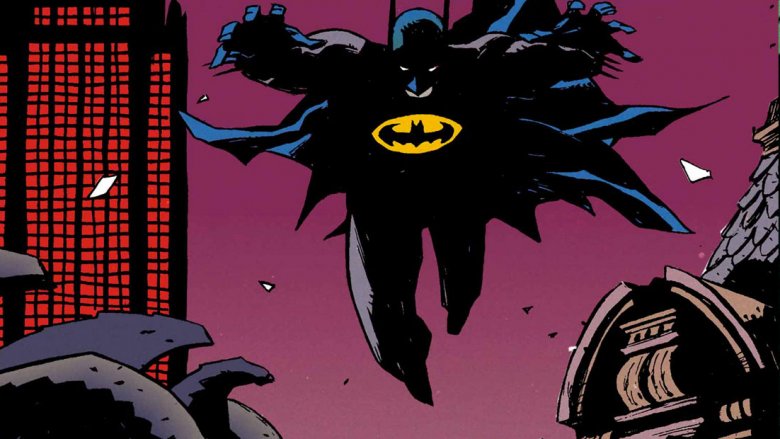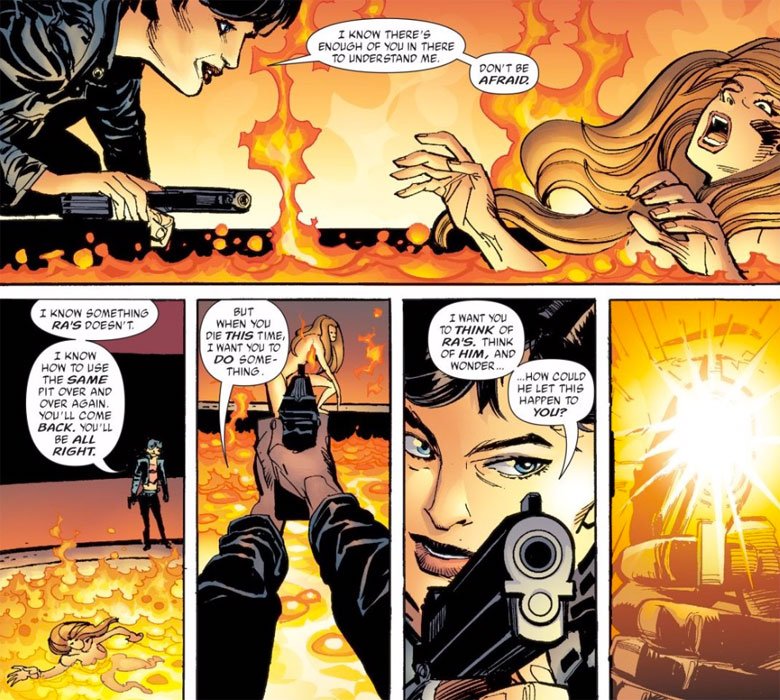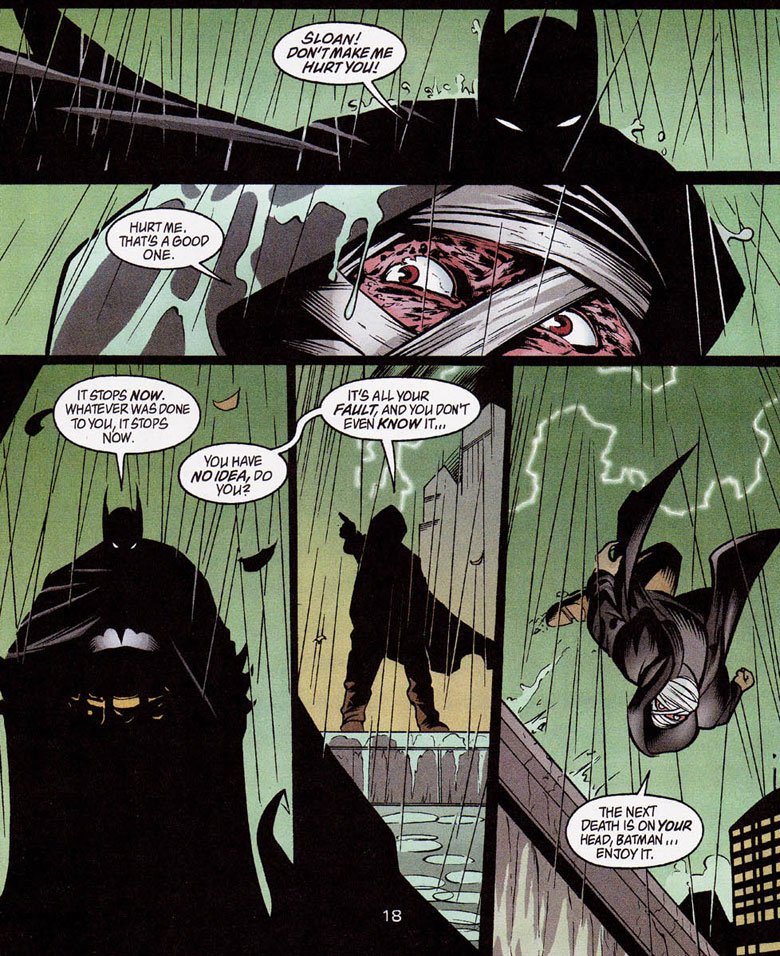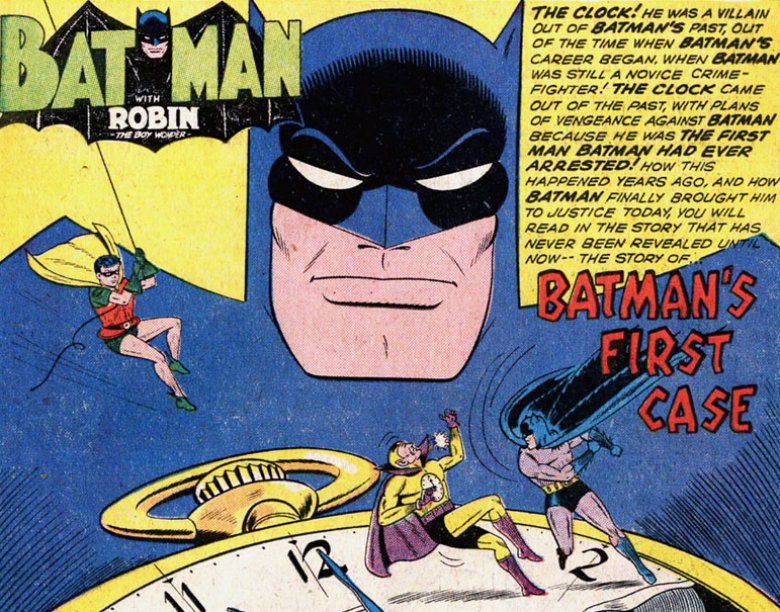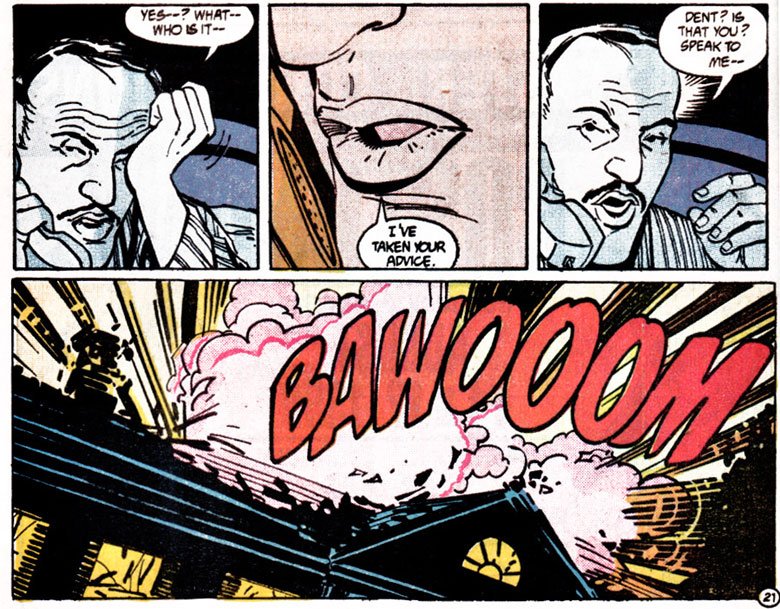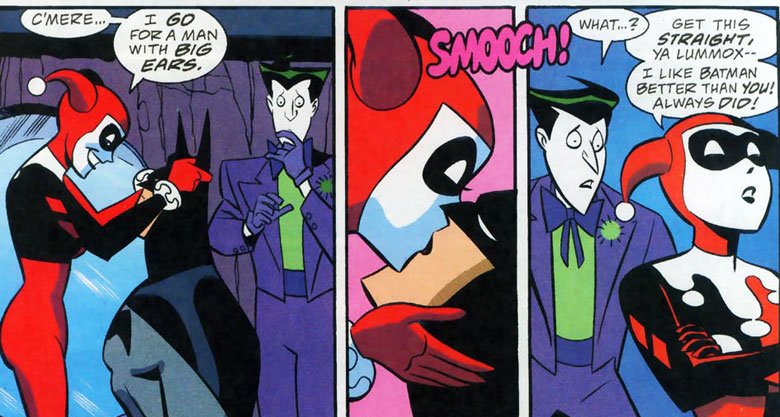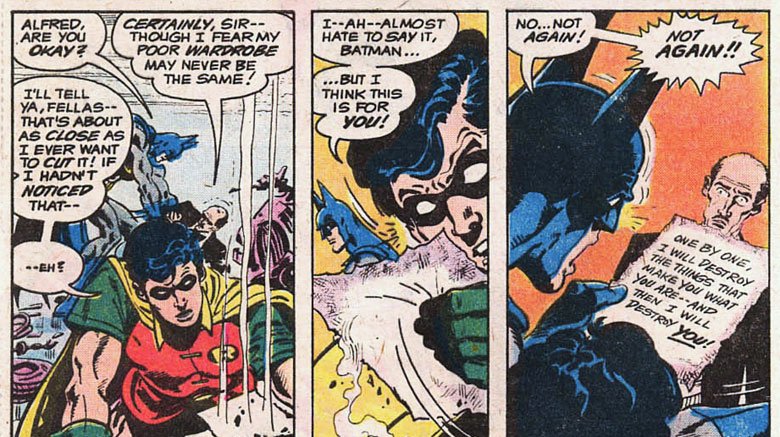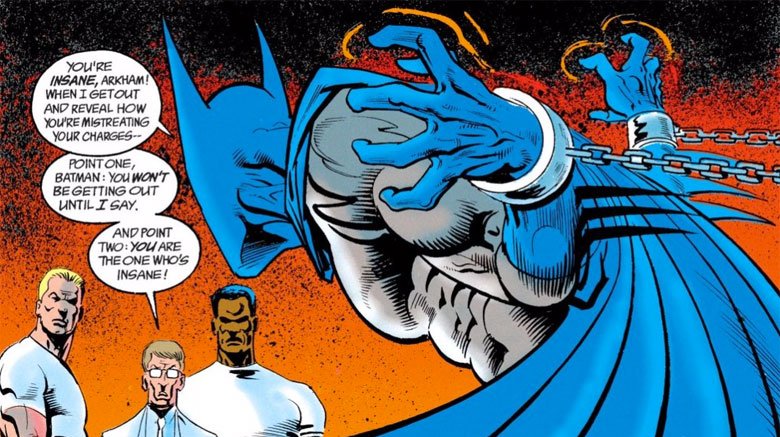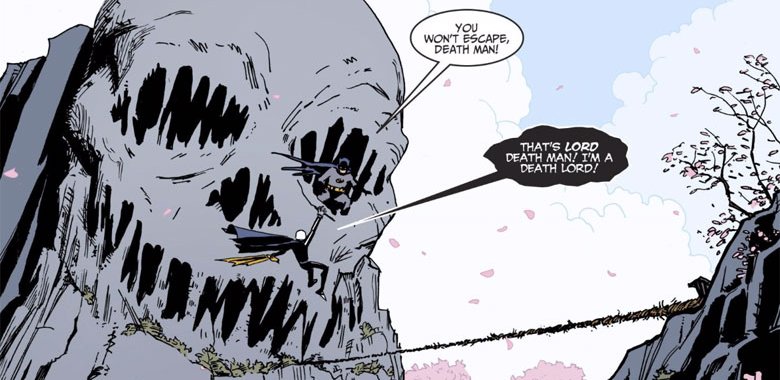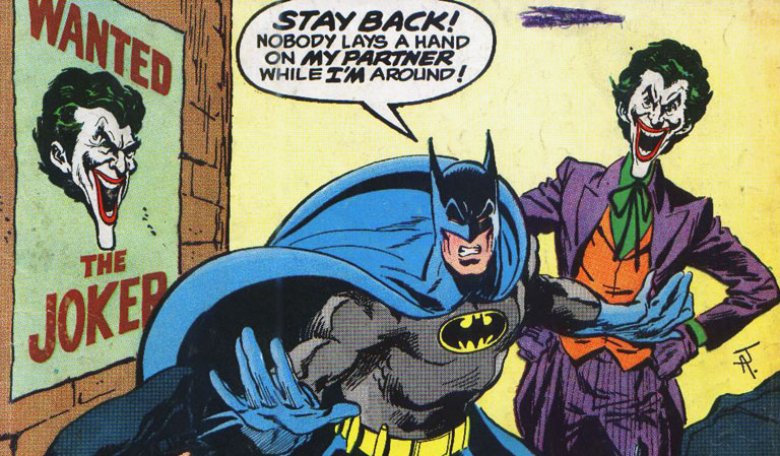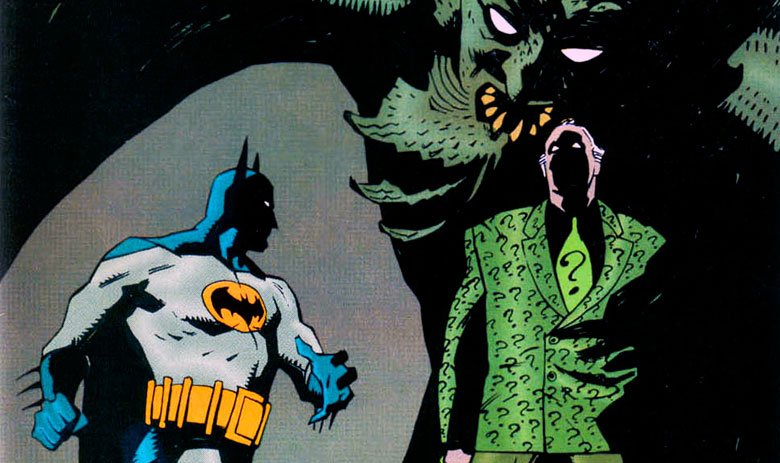Underappreciated Batman Moments You Have To Check Out Right Now
To say there have been a lot of good Batman stories is putting it pretty mildly. Since the Dark Knight's debut in 1939, he's arguably starred in more great comic books than any other superhero. The thing is, with a few thousand stories to sift through to find the best, it often feels like the only ones that ever get talked about are the same handful of blockbusters—and as good as they are, stories like Batman: Year One, The Dark Knight Returns, and The Killing Joke are really only scratching the surface.
So with that in mind, we've dug through bookshelves and long boxes to bring you ten underrated classics that no Batman fan should be without. From Silver Age strangeness to dark psychological takes on the villains and even a little comedy thrown in for good measure, these underappreciated Batman stories are well worth tracking down the next time you hit up your local comic book shop—and most of 'em aren't that hard to find, either!
Batman: Death and the Maidens
For every great comic that creates a seismic shift for a character and their world, there's another, equally great comic that seems to be completely ignored. Unfortunately, Greg Rucka and Klaus Janson's Death and the Maidens is one of the latter. At heart, it's the story of two families: Bruce Wayne's and Ra's al-Ghul's. After decades of stories about the immortal Demon's Head and his daughter Talia, readers were introduced to Nyssa Raatko, the first—and significantly less beloved—daughter of Ra's al-Ghul.
After being betrayed to the Nazis by her father and having her own family systematically exterminated, Nyssa sought revenge by turning Talia against their dad. Her quest for vengeance was so brutal and effective that Ra's was forced to turn to Batman for help, offering him an alchemical potion that would allow him to speak to the shades of his parents. While stories about Batman's parents aren't exactly uncommon, Death and the Maidens is one of the only ones to put a spotlight on Batman's relationship with his mother Martha, exploring how she'd feel about her son's vigilante career. As for Nyssa—spoiler warning—she ends the story by usurping Ra's as the new Demon's Head, taking over his operation as a mastermind who's just as brutal, but without her father's respect for Batman.
But here's the downside: even though Nyssa was clearly meant to be a major new enemy for Batman, she never fulfilled that promise, and was even killed off-panel (in an issue of Robin, of all places) to pave the way for Ra's to return. Even so, it's well worth a read. A great story is a great story, even if the status quo is reset right after.
Dead Reckoning (Detective Comics #777 - 782)
When new readers are looking for a great Batman story, one of the most frequently recommended is Hush. On the surface, it's got everything a casual fan could want, including an all-star cast of villains and a plot driven by a mystery tied to Batman's past. The thing is, while Hush got all the attention, there's a deep cut classic running almost concurrently that did all those things even better. It might not have had a big-name artist like Jim Lee, but Ed Brubaker, Tommy Castillo, and Wade von Grawbadger made up for that with an incredible story.
Much like Brubaker and Doug Manhke would do with The Man Who Laughs, Dead Reckoning was a modern reimagining of a Golden Age story. This time, it was a reintroduction for the second Two-Face, Paul Sloane (with an E). In his original appearance, he was an actor with an uncanny resemblance to Harvey Dent (or at least half of him) who was cast as Two-Face in a TV movie, only to suffer an accident that left him with very real scars, just like Two-Face's.
The modern version, however—Paul Sloan—was a Method actor hired to fill in for Two-Face in the early days of Batman's career, when the Joker, Penguin, Scarecrow, and Killer Moth hatched a team-up plan to kill the Caped Crusader, and the real Two-Face refused to join in. Surprisingly, the idea of having a double didn't sit well with the real Harvey Dent, and his extreme reaction destroyed Sloan's life. Eight years later, Sloan returns for revenge as a new villain, the Charlatan, and the result is one of the best Batman thrillers of the 21st century.
Batman's First Case (Detective Comics #265)
When writer Mike W. Barr was asked about his single favorite Batman story, he pointed to Bill Finger and Shldon Moldoff's "Batman's First Case," from 1959's Detective Comics #265. That's no small endorsement, either—for those of you keeping score at home, Barr's not only the co-creator of Katana from Suicide Squad, he also wrote incredible Batman stories like "Fear for Sale" and "Year Two," and knows a little thing about what makes the Dark Knight work.
There's a good reason for his endorsement, too. While it's definitely a product of the Silver Age, full of the square-jawed aesthetics of the era, it also has pretty much everything that you could possibly want from a classic Batman adventure. There's a gimmick villain called the Clock who turns out to be the first criminal Batman ever arrested, returned to get his revenge on the Caped Crusader after becoming obsessed with having to do time in prison, leading to deathtraps and set pieces involving oversized pocket watches. There's even an origin story thrown in there, too!
Finger, of course, was Batman's long-unrecognized co-creator, and while this isn't his best story—that honor is usually bestowed on the dark and trippy "Robin Dies At Dawn"—it's certainly a crash course in how Batman worked in the Silver Age, and crams a whole lot of action into only 12 pages.
Eye of the Beholder (Batman Annual #14)
For villains like the Joker or the Riddler, pinning down a "definitive" story can be a pretty tricky proposition. For Two-Face, however, it's easy.
From the grotesque, almost lurid cover by Neal Adams on into the extra-sized story by Andy Helfer and Chris Sprouse, Batman Annual #14 dives deep into the psychological trauma always lurking underneath the surface of Harvey Dent, and Batman's struggle with trying to help a good man step back from the edge before the horrors of Gotham City finally broke him. Of course, we all know how that story turns out—and if you don't, that cover is a pretty big clue—but it's rarely been told as well as it is here.
With a focus on Batman's early days and the tragic fall of Harvey Dent into Two-Face, curious readers who appreciated Aaron Eckhart's performance in The Dark Knight will find a lot to enjoy in this one.
My Boyfriend's Back (Batman Adventures #3)
Harley Quinn's ill-fated relationship with the Joker and the way he'd manipulate her to suit his own ends was one of the aspects of her character that made her a sympathetic anti-hero and a fan favorite after her debut in Batman: The Animated Series, and it's informed almost all of their interactions in the years since. This story, on the other hand, flips that dynamic on its ear, asking what happens when it's the Joker who finds himself hopelessly in love, and Harley who's barely even interested.
When Batman Adventures was relaunched after the end of The Animated Series, the creators had the freedom of not having to tie things into a cartoon. As a result, the first issue sets up a new status quo for plenty of major characters: the Penguin was elected mayor, the Riddler gave up on crime in favor of making money with his tech, and the Joker, thanks to a sharp blow to the head, became a happy, docile clown completely uninterested in murdering Batman.
The problem, of course, is that without his murderous ways, the Joker's not really the Mr. J that Harley fell in love with, leaving her to do everything she can to shock him back into his supervillain mindset—which of course means hiring assassins to try to murder him and smooching Batman instead. The tragedy of their relationship is still very much in there, but it's outweighed by some solid comedy that puts a new spin on the characters.
Untold Legend of the Batman
Back in the days before you could just hop on Wikipedia to get a crash course in a character's history, or even head to the bookstore and pick up collections of classic stories, DC was faced with the problem of giving new readers a way to get a handle on the complex continuity behind their biggest characters. Eventually, they'd decide to just scrap the whole thing and start over, but before they got that drastic, they came up with a pretty interesting solution: short miniseries where characters were given a good reason to think about all they'd been up to for the past few years.
The roster would include Superman in World of Krypton and Secrets of the Legion of Super-Heroes, but Untold Legend of the Batman was by far the best. It opens in the Batcave with an unknown villain destroying a bat costume worn by Bruce's father, sending Batman into a rage that he promises only one of them will survive. From there, the search for the villain's identity leads down a winding path of complicated Bat-history, and into a surprisingly dark climax for a book that was sold to children with an cassette tape version.
The best thing about it is that it very rarely feels like the continuity recap that it absolutely is. If you're curious about the Golden and Silver Age Batman but don't want to read, you know, 50 years worth of comics, this makes a surprisingly comprehensive substitute.
The Last Arkham (Shadow of the Bat #1 - 4)
As tiresome as it might be, the snarky post-modern idea that Batman is just as insane as the criminals he fights still comes up every time someone wants to sound smart while talking about superheroes. It's as unavoidable as death and taxes, and only slightly more pleasant. On the other hand, it has resulted in a some pretty great stories, and one of the best came from Alan Grant and Norm Breyfogle when they launched Shadow of the Bat in 1992.
When Jeremiah Arkham rebuilds his famous asylum with an eye towards using radical—sometimes even torturous—techniques to cure Gotham's villains, he also sets his sights on rehabilitating the city's most infamous character: Batman, who went too far and killed a cop during an investigation. The trick, of course, is that it's all a ruse. Batman was going undercover to investigate murders that point to inmates that are still locked up, with a suspicion that Arkham himself could be involved.
The story is currently in print in paperback, but if you want the full effect, definitely track down the single issues. The first one came bagged with a pop-up blueprint of the "new" Arkham Asylum, a very cool souvenir and a nice touch that the newer printing unfortunately lacks.
The Garden of Death (Batman '66 #54 - 55)
Let's talk about Lord Death Man. Originally introduced as "Death Man" in American comics as a simple villain who used yoga trickery to fake his own death and then resurrect himself, he was adapted in the '60s into a Japanese manga story by writer/artist Jiro Kuwata, adding more to the story and giving him that lordly title to round out his ominous name.
When that version of the story finally made its way to American shores 50 years later, it created a sort of weird Lord Death Man Renaissance, with the villain becoming so strongly identified with Kuwata that he was thought of as a Japanese supervillain rather than just a weirdo in a skeleton costume. He made a couple of appearances in the main continuity, and one of the best came in Batman '66, where Jeff Parker and Sandy Jarrell re-adapted LDM as a villain for the TV-style Batman in a trippy story that gets downright surreal in the best way.
Plus, if Lord Death man isn't enough to hook you, this one also includes the first (and only) appearance of the Japanese Batmobile, a bright yellow coupe that looks like it's right out of Speed Racer. It's the little touches that make this one so great.
Death Has The Last Laugh (The Brave and the Bold #111)
Bob Haney and Jim Aparo put Batman through a lot of strange team-ups during their time on Brave and the Bold. He joined up with Sgt. Rock to fight a resurrected Adolf Hitler, Batman and Wonder Woman were brainwashed into becoming a circus act, and in one issue, the Atom has to reanimate Batman's corpse by jumping around his brain—Batman even had to team up with Haney and Aparo themselves at one point to stop them from becoming victims of supervillains they created. In #111, though, Batman teamed up with the most unlikely sidekick of all: the Joker.
It's an idea that has been used pretty frequently since—that this time, it's actually just someone framing the Joker for something he didn't do. The temptation to let him get what's coming to him is always there, but not capturing the real culprit means the person who actually did it—with the "it" in this case being a shockingly grisly murder of an entire family for the sin of doing the right thing—goes free. It's a classic setup, but even in 1974, Haney and Aparo did it with a twist: it's actually just a long con. It's the Joker who "frames" himself, teaming up with a hitman who also hates Batman in order to lay an extremely complicated trap.
It's a big adventure with some great twists and turns, but honestly? The single best reason to read this is to find out about the secret code Batman uses to turn on his car. Seriously: you will not believe it when you see it.
Dark Knight, Dark City (Batman #452 - 454)
If you really want to dive into some incredibly underrated Batman stories, Peter Milligan's early '90s tenure on Batman and Detective Comics is not to be missed—especially "Dark Knight, Dark City," with art by Kieron Dwyer and covers by Hellboy creator Mike Mignola.
One of the darkest, strangest Batman stories of all time, "Dark City" pits Batman against a version of the Riddler who's far more unhinged than any readers had seen before, and delves into a history of Gotham City that includes founding father Thomas Jefferson participating in a satanic ritual that raised a demon who haunted the city for the next 200 years. Eventually, it's revealed that it's the demon—Barbatos—that's possessing the Riddler, setting up traps where Batman is forced to inadvertently perform dark rites himself, like bathing in blood (from an explosion at a blood bank) to slitting the throat of an infant (to perform an emergency tracheotomy).
Of all the stories on this list, this one is probably the least underrated, and is generally (and justifiably) regarded as a modern classic, so here's a bonus tip for you. If you liked this one, read Milligan, Jim Aparo, and Adrienne Roy's "Library Of Souls," from Detective Comics #643, in which Batman takes on a murderous librarian who divides Gotham City up according to the Dewey Decimal System and leaves the bodies of his victims in leather jackets with numbers stitched on the sleeves. It's completely bizarre, and surprisingly awesome.
